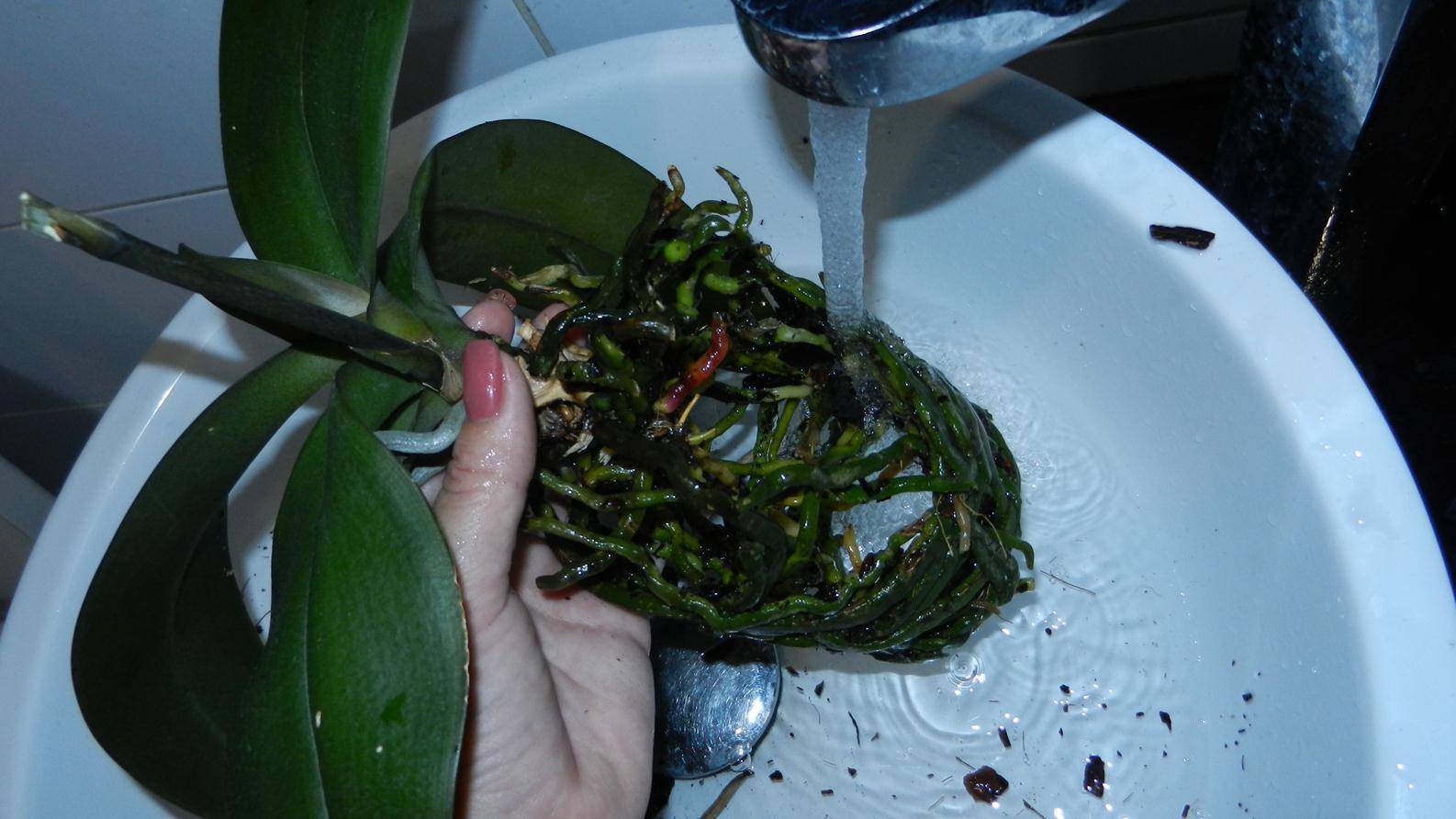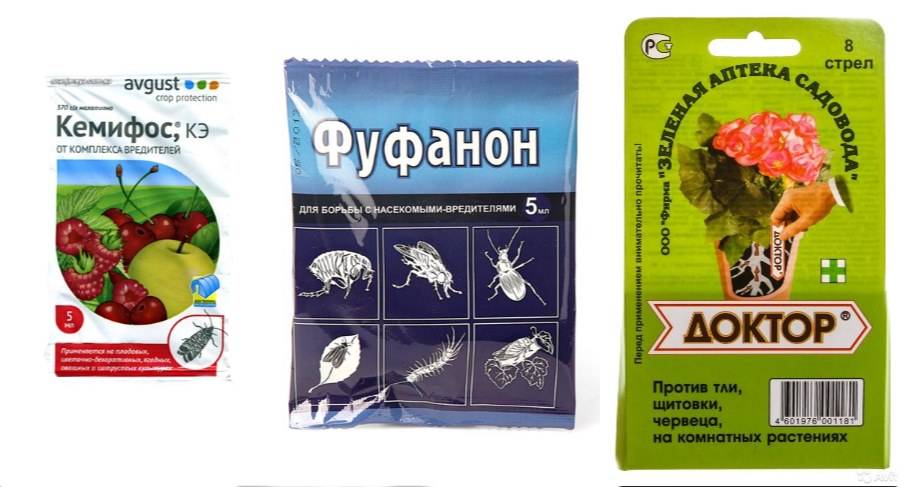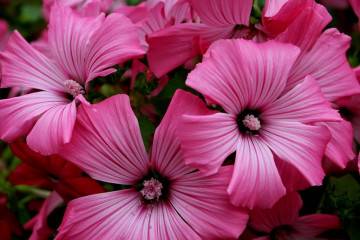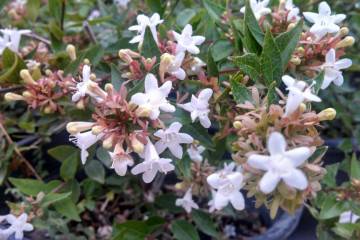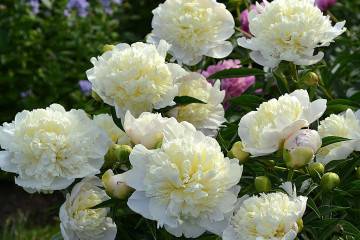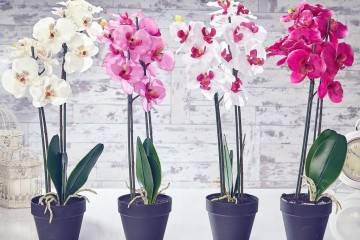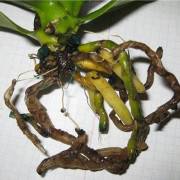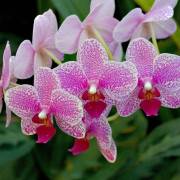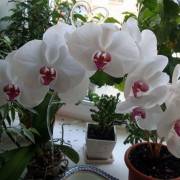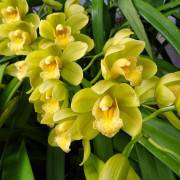White bugs on an orchid: ways to get rid of pests
Content:
The variety of orchids is amazing. The beauty of a flowering plant will not leave anyone indifferent. But there are pests who also do not leave her unattended. One of them is a mealybug. If light fluffy insects are found on the leaves of an overseas guest, it's time to sound the alarm.
Information about white bugs
If white hairy bugs appear on an orchid, how to get rid of them? How to recognize the damage of a flower with a scale insect? Fluffy oval specks appear on the affected orchid leaves. They are white, cream, or pink. About 2000 species of insect have been studied on the planet.
There are 5 varieties on the territory of Russia:
- bristly;
- grape;
- citrus;
- root;
- Comstock worm.
The pest belongs to the family of hemiptera or arthropod worms. In appearance, the male is very different from the female. This is a flying moth. For indoor flowers, there is no direct harm from males.
At first, the scale of insect settlements is small. If small amounts of white fluffy bugs appear on the orchid, treatment at this stage is easiest. Pests can be collected manually.
A half-centimeter female of the worm can hide in secluded places. They hide especially carefully to lay eggs.
The fluffy female feeds on plant juices. Along the way, it secretes honeydew nectar, which, in turn, causes the appearance of fungi or other insects. Especially a lot of honeydew nectar can be formed when the flower is affected by citrus mealybugs.
The bug is multiplying at an incredible speed. During the season, the female lays from 200 to 400 eggs. Moreover, the female does not need a male for reproduction.
Reasons for the appearance of parasites on an orchid
For a healthy plant, mealybug is not dangerous. He attacks weakened specimens.
There are several reasons for the decrease in orchid immunity:
- insufficient lighting;
- poor watering;
- low humidity level;
- fertilizer abuse.
Such violations of the rules of care lead to a change in the composition of the cell sap. Low nutrition (or excessive) prevents the plant from developing normally.
Possible pest locations
The worm settles where there is food for it: these are juicy leaves, young flower stalks, buds. The latter, if damaged by a pest, are best cut off and disposed of.
It is possible to create conditions for the flower when all the bugs themselves will crawl out onto the leaves. To do this, they are placed in a bathroom at high temperatures (30 ° C and above) and high humidity.
On orchid leaves
Pests often settle on orchid leaves. They like succulent large leaf plates. If necessary (laying eggs, direct sunlight, excessive dry air), they urgently move into the leaf sinuses, under the scales of dried leaves. Therefore, when buying, you may not notice the hidden pests.
In the ground
For all types of ticks, scale insects, wood lice and the like, the soil is one of the favorite habitats.Complicating the situation is the fact that you can notice their presence when it is too late to save the plant.
What to do if white bugs are bred in the soil of an orchid? You can try to save him only by transplanting to new soil. Only first should the roots be completely freed from the ground and treated with an insecticide. Or at least hold it in a bright pink manganese solution.
Methods for dealing with bugs
When the white bugs on the orchid have already inhabited the entire bush, you need to take measures to cleanse it. This requires the following actions:
- Plant a diseased plant.
- Collect all the bugs, wipe the leaves with a solution of laundry soap.
- Remove all eggs and also treat with soapy water.
- Remove and destroy heavily affected plant parts.
- Inspect all adjacent bushes (repeat every two days).
- Treat the entire surface under the pots with soapy water
- Wipe down the window glass.
- Apply insecticides for severe damage.
It is also necessary to get rid of flying males, for example, using adhesive tape.
Folk ways
If white hairy bugs appear on the orchid, how to get rid of them with folk remedies?
For domestic plants, in particular orchids, the following methods are widely used against the worm:
- A solution of oil in water. For this, 2 tbsp. l. any vegetable oil is stirred in a liter of water. The emulsion turns out to be quite liquid, so spraying can be carried out with a spray bottle.
- Garlic tincture. It is prepared at the rate of a head of garlic for half a liter of water. The crushed slices are filled with boiling water and infused for about 5 hours. It is convenient to apply the solution with a brush.
- Horsetail tincture. It needs to be made from 0.1 kg of dry grass and one liter of boiling water. The cooled liquid is ready for spraying a sick flower.
- Soap-alcohol solution. For this, 1 liter of warm water, 15 ml of liquid oil (10 g of soap shavings) is enough. After the soap is completely dissolved, 10 ml of alcohol (20 ml of vodka) is added. The product is applied with a brush.
For a complete cure, phalaenopsis is recommended to be processed 3-4 times, with an interval of 3 days.
Mechanical methods
Mechanical cleansing of the orchid from parasites is possible only with small lesions. Since it is almost impossible to get rid of white shaggy bugs on orchids with a strong defeat of the bush. It consists in the regular manual removal of live individuals and their eggs.
Chemicals
When white fluffy bugs appeared on the orchid, what should I do to combat them? The most effective in the fight against white bugs are chemicals - insecticides.
You need to start processing when young egg bugs appear. Taking into account the undulation of hatching of young animals, the treatments should be repeated every two weeks for 2-2.5 months.
The operating principles of chemicals are different. There are two main ones:
- The first group is used for external use. The healing solution is applied to the ground area of the flower. He poisons the white beetle on the orchid. This happens when eating a poisoned plant or when it comes in contact with poison.
- The second group is for direct application to the ground. The poison is carried by the roots to the ground part of the flower and poisons the food of insects.
When using chemicals, there are restrictions:
- After processing, the plants must be protected from direct sunlight.
- Strictly maintain the distance indicated in the instructions for use. Spraying at close range can freeze the ground part of the plant.
- Oil preparations must be applied strictly to the affected areas, since oil impedes the process of photosynthesis.
- Medicines in the form of sticks contain a significant proportion of fertilizer in the composition, therefore, when using them, you need to reduce the amount of conventional dressings. An excess of fertilizer weakens the flower's immunity.
In any conditions, flowers can be attacked by pests.The simplest thing is to carry out preventive work, which consists in regular examination. You should also adhere to the rules of caring for home plants. But what if white insects have already appeared on orchids? Start treatment urgently!


